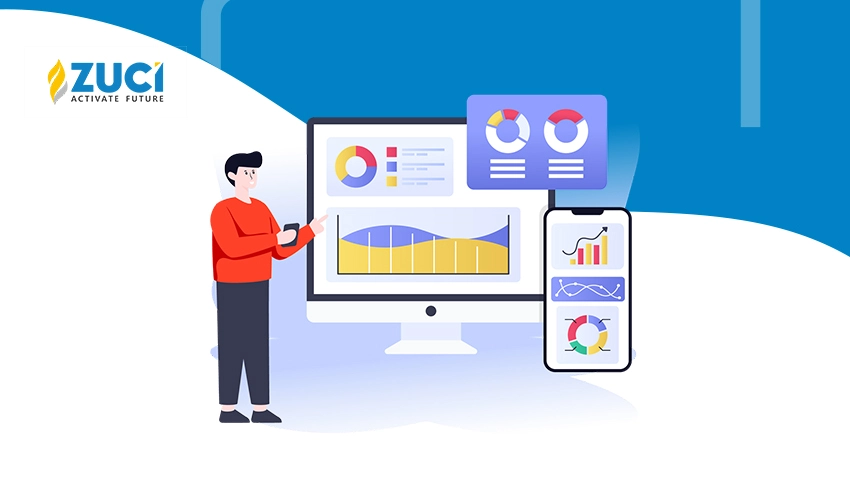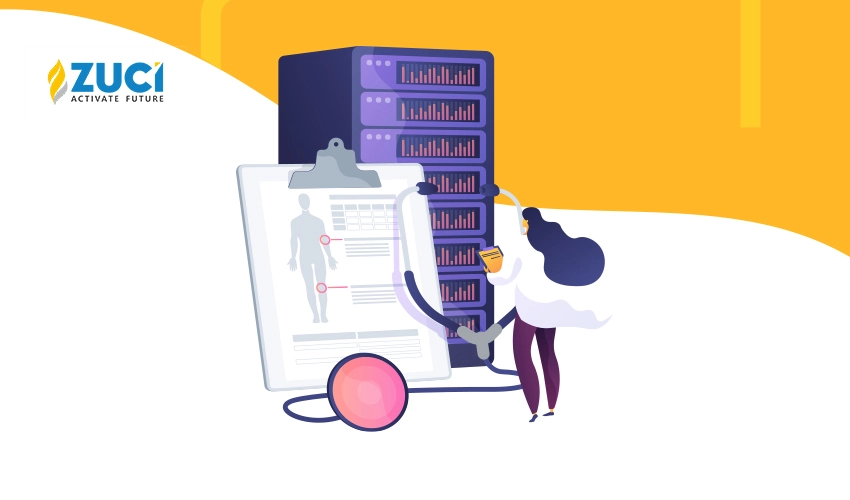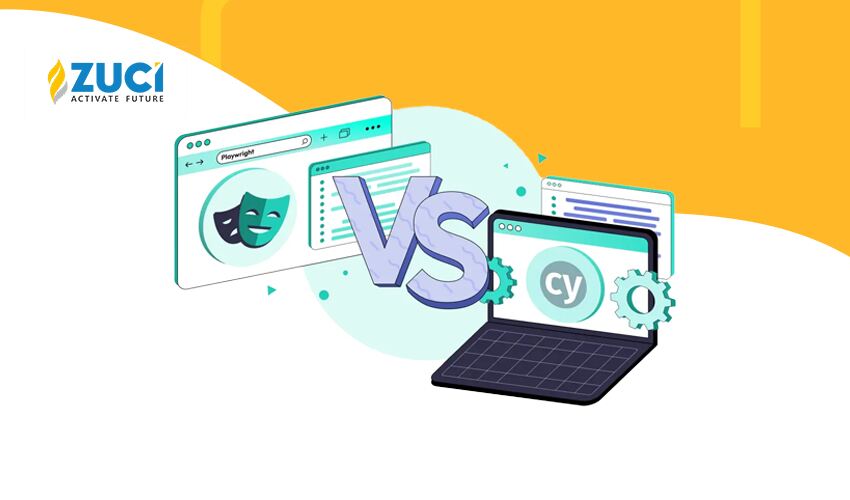Reading Time : 1 Mins
7 Reasons your Business needs Progressive Web Apps
Loves getting creative with mundane topics in addition to geeking out over books and movies.
Mobile devices, which have become widely available over the past few decades, have fundamentally altered the character of the internet as we know it. Mobile devices, which most internet users use, have replaced desktop computers as advertisers’ primary medium of choice. To combat the slow performance of the web on mobile devices and to provide users with offline access, notifications, and customizable preferences and settings, developers resorted to creating native applications with more compact interfaces and input models.
Progressive web apps (PWAs) offer a fantastic mobile user experience since they incorporate the most significant features of both websites and native apps. They function similarly to regular websites, but their unique features, like offline access, push notifications, and connection to device hardware, set them apart.
A progressive web app (PWA) combines the convenience of a traditional website with a mobile app’s functionality. With a PWA, you can have an enhanced version of your site or online shop that loads quickly, is dependable, and is fun to interact with.
The Concept of a Progressive Web App
All progressive web apps are compatible with Android and iOS because they are developed and operated in a web browser. In addition, because PWAs are written in standard web languages, including HTML, CSS, and JavaScript, they are frequently more cost-effective and easy to find. Without requiring the user to install anything, they can perform many of the same tasks as native apps, such as going into full screen and creating a shortcut on the mobile home screen.
Future-proofing an app using a PWA means that data, including promotions and frequently utilized resources, are always available, even when the user isn’t connected to the internet.
Precisely what is the point of PWA?
- One significant advantage of PWAs over native apps is that they don’t need to be developed for as long or as expensively. Putting it into action is a lot quicker.
- Submitting a PWA to the iOS or Android app stores is optional. Your website makes its installation as simple as clicking a button.
- People are more invested in adopting PWAs since they function similarly to apps. As a result, they will probably use the online app more frequently.
- Mobile internet traffic accounts for more than half of all global internet traffic. However, mobile conversion rates are only half those seen on desktop computers. PWA helps re-engage inactive mobile users and boost conversion rates for specific audiences.
- Businesses can communicate with prospective consumers, improve leads, and boost income by pushing notifications sent by PWA.
Differences between Native and Progressive Web Apps
Better customer service is a priority for many businesses as they compete for a larger share of the expanding internet market, particularly on mobile devices. Developments in mobile computing and the proliferation of smartphone apps can be traced back to the spread of the COVID-19 virus.
To make the most of the potential, many companies needed to establish an online presence swiftly. Thus, PWAs have become increasingly popular in sectors such as e-learning, healthcare, delivery, e-commerce, social networks, and communication to expand their user bases at a less cost rapidly.
Consider the progressive application strategy for working on a tighter timeline and a smaller budget.

Progressive Web Apps: 7 Reasons Your Business Needs Them
A Progressive Web App Is the Wave of the Future for Mobile Web.
As companies look to save money and resources by relying less on expensive and data-intensive native applications, they will increasingly turn to progressive adoption apps, leading to a considerable increase in PWAs on the mobile web in the future. For companies looking to expand their operations, PWAs are the best option because of their adaptability and cross-platform compatibility.
-
Low Development Cost
To make a native app from scratch, you need to use two different sets of source code. Developing and managing two distinct code bases might quickly become prohibitively expensive.
On the other hand, progressive web apps are written in standard languages such as HTML, CSS, and JavaScript and are maintained by a single, web-only development team. Since web apps have been around for a while, it’s also easier and cheaper to put together a good team of developers in this area.
-
Eliminates Third-Party App Distribution
It will cost more money to get your app into app stores. There are app marketplaces that charge you to publish your app, and take forever to validate it. This procedure raises costs and lengthens the average time to market.
But if you use a PWA, you can completely avoid the problem of app stores. PWAs are helpful for consumers and businesses since anyone with a contemporary browser (like Chrome or Firefox) may access the app and receive notifications without downloading new versions or going through another authentication process.
-
Universal Compatibility with All Devices
Careful native development is the only way to get the best performance and a unique user experience. The disadvantage is that the project has to be designed twice and tweaked for each device.
When making progressive web apps, it’s essential to consider how it works on all platforms and devices. Because of their low cost and cross-platform interoperability, many large corporations have also used progressive web apps.
-
Clarity on Data Management
Native applications ask the user to visit a mobile app store, download and install the application, and grant the app access to any necessary data and settings. When apps are overly large or data-intensive, consumers may avoid them altogether.
In the same way that websites load content dynamically, advanced web applications do the same. Therefore, the user’s likelihood of continuing to use the PWA increases dramatically regardless of its small size and minimal impact on their data plan.
-
PWAs Work Offline
Users place a high value on the ability to navigate without an internet connection. Because of this, you won’t have to worry about losing access to vital information and services during a connection interruption.
PWAs provide offline access since data is cached and stored. Service worker skills are leveraged to supply data while also boosting speed by handling cache resources, monitoring networks, and permitting push alerts even when the user is offline.
PWAs can function even if there is no network or an unstable connection. With a progressive web app, you can use it even when you don’t have an internet connection thanks to the app’s built-in service workers automatically caching data and features you use frequently. By remembering what they’ve already seen, an app can present a personalized, offline version of a website if the user attempts to view a URL they haven’t seen while connected to the internet. As a result, fewer customers will abandon their shopping carts. This is because PWAs streamline the process of loading web pages and giving users what they need.
-
Incredible Performance!
PWAs can load faster because service workers constantly operate in the background doing all the hard work. These scripts operate independently of the page they are on, fetching all the data they need in advance to ensure a smooth and quick user experience. Furthermore, the scripts’ absence from the page means they are not causing any delays in their rendering.Once the data has been cached, moving around within the app is incredibly quick. The app doesn’t need to be loaded into memory before it can be used; users can add it to their home screen.
Progressive apps have a solid performance record in terms of speed. Because PWAs use asynchronous Javascript, they can be loaded instantly, even on a slow connection. Thanks to the nature of progressive web apps, you can quickly create a solution that uses browser and app caching to save time for your company.
-
Constant Improvements
Progressive web apps (PWAs) update themselves without users’ knowledge or consent. Apps like these automatically update as the user interacts with them. Avoiding the hassle of downloading updates in bulk and individually applying them is a huge time saver. They offer a fresh user interface with less need for manual intervention. Mostly on the side, some PWAs will alert users through push when new versions are available. You can even restrict what people can see, leading to a positive user experience and more satisfied customers.
Requirements for a high-quality PWA
A PWA is an app that satisfies a set of criteria or incorporates a set of functionalities, such as the ability to function without an internet connection, to be installed on a device, to sync data with other devices, to deliver push notifications, and so on.
The following are some desirable additions to PWA.
- SSL Certificate: The HTTPS protocol is required for the website’s security. This is the initial prerequisite for PWA. There is a need to get an SSL Certificate authority and set it up on the site immediately
- App Shell: This is the basis of your PWA, the first thing a user will see when they launch your web app. The shell encapsulates the data while consuming as little bandwidth as possible
- Service Employee: For a PWA to function offline, save web page content in a cache, and receive push notifications, you will need to build this script
- Use push notifications: To notify PWA customers, you must implement push technology on your website. You can use a web push provider or build your app that satisfies Google’s specifications
- Manifest.json: This document describes your web app (including its name, URL, and icon) and how a user’s device will display your PWA
- PWA request: If you’ve followed every step necessary for PWA implementation, browsers will prompt users to install your app without your intervention. Once a person has visited a page twice in Chrome, he will automatically see a PWA popup. However, if you want to modify PWA prompts, you’ll need to add code or use a third-party service
- PWA environment: You should analyze further how well your PWA is doing. Try out WebPageTest, LightHouse, and Chrome’s DevTools
Examples of Popular Progressive Web Apps
Practically speaking, progressive web apps have several uses. We’ll examine how some major corporations have used PWA development to succeed.

Pinterest’s release of its mobile app was an attempt to broaden the social network’s global user base. However, the app’s user conversion rates were low because few people were willing to install anything besides their native application. Internal statistics also showed that only roughly 1% of users would sign up. In looking into the issue, Pinterest found that the mobile app’s performance was less than ideal. Based on this data, they decided to re-write their app using the PWA because it was less expensive and required less infrastructure. When they switched to a PWA, there was an increase in user activity and ad income due to the improved loading speeds.

The Uber PWA eliminates the requirement to install and download the app before using it. The software is tiny, takes up less than 50kb of storage space, and it contains all the necessary functionality to run, so it can still serve its purpose even if the connection is slow.

Twitter Lite, Twitter’s PWA-based mobile web platform, replaced mobile browsers as the default in April 2017. It necessitates less space to get going, aids in reducing data usage, aids in improving the number of Twitter posts and webpages per visit, and decreases bounce rate.
Why your company has to start making progressive web apps right now
Progressive app development is about to explode. E-commerce, the media, and the hospitality industries stand to gain the most from this trend.
- The cost of developing a progressive app will be significantly cheaper than developing a native app
- They provide you with an app-like experience in the browser.
- They are cross-platform, so you won’t have to spend as much time customizing your service to different systems.
With Google’s support, we should expect rapid growth and a streamlined strategy.
We’re just as thrilled as any other web app development firm to provide PWA app development. Though PWA apps aren’t the best fit for every company, they can help your already-available high-tech items get a solid foothold in the mobile market.
Progressive Web App design and development company Zuci Systems helps enterprises grow with digital capabilities and engage with customers across digital touch points.
Related Posts























